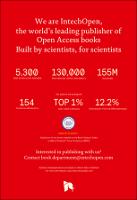Chapter Dendritic Cell Endocytosis Essential for Viruses and Vaccines
Author(s)
McCullough, Kenneth C.
Sharma, Rajni
Language
EnglishAbstract
Nanoconstruction of metals is a significant challenge for the future manufacturing of plasmonic devices. Such a technology requires the development of ultra‐fast, high‐throughput and low cost fabrication schemes. Laser processing can be considered as such and can potentially represent an unrivalled tool towards the anticipated arrival of modules based in metallic nanostructures, with an extra advantage: the ease of scalability. Specifically, laser nanostructuring of either thin metal films or ceramic/metal multilayers and composites can result on surface or subsurface plasmonic patterns, respectively, with many potential applications. In this chapter, the photo‐thermal processes involved in surface and subsurface nanostructuring are discussed and processes to develop functional plasmonic nanostructures with pre‐determined morphology are demonstrated. For the subsurface plasmonic conformations, the temperature gradients that are developed spatially across the metal/dielectric structure during the laser processing can be utilized. For the surface plasmonic nanoassembling, the ability to tune the laser's wavelength to either match the absorption spectral profile of the metal or to be resonant with the plasma oscillation frequency can be utilised, i.e. different optical absorption mechanisms that are size‐selective can be probed. Both processes can serve as a platform for stimulating further progress towards the engineering of large‐scale plasmonic devices.
Keywords
laser annealing, laser induce self‐assembly, plasmonics, surface plasmon resonance, plasmonic nanoparticlesDOI
10.5772/67779Publisher
InTechOpenPublisher website
https://www.intechopen.com/Publication date and place
2017Classification
Condensed matter physics (liquid state & solid state physics)


 Download
Download